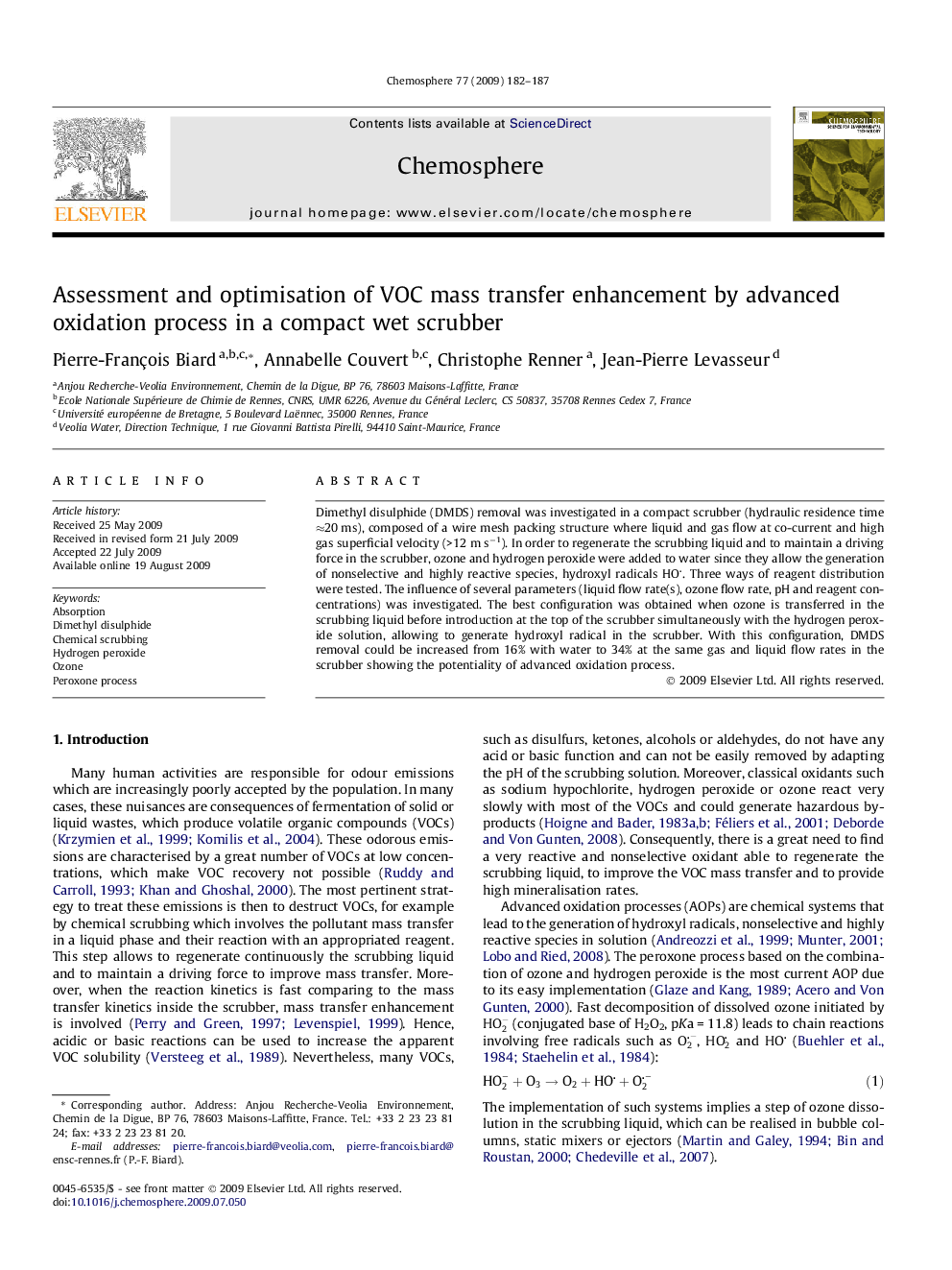| Article ID | Journal | Published Year | Pages | File Type |
|---|---|---|---|---|
| 4412547 | Chemosphere | 2009 | 6 Pages |
Dimethyl disulphide (DMDS) removal was investigated in a compact scrubber (hydraulic residence time ≈20 ms), composed of a wire mesh packing structure where liquid and gas flow at co-current and high gas superficial velocity (>12 m s−1). In order to regenerate the scrubbing liquid and to maintain a driving force in the scrubber, ozone and hydrogen peroxide were added to water since they allow the generation of nonselective and highly reactive species, hydroxyl radicals HOHO. Three ways of reagent distribution were tested. The influence of several parameters (liquid flow rate(s), ozone flow rate, pH and reagent concentrations) was investigated. The best configuration was obtained when ozone is transferred in the scrubbing liquid before introduction at the top of the scrubber simultaneously with the hydrogen peroxide solution, allowing to generate hydroxyl radical in the scrubber. With this configuration, DMDS removal could be increased from 16% with water to 34% at the same gas and liquid flow rates in the scrubber showing the potentiality of advanced oxidation process.
